Equity markets are by far the most sensitive to changes in the economic landscape. Wall Street witnessed this during the financial crisis of 2008, and also during the epic bull run seen in 2013. While most equities show a strong correlation with the health of the overall economy, there are several “bellwether” companies that are often used to gauge economic conditions.
What Is the Definition of Bellwether?
The term bellwether is used to describe a stock that tends to comment on the state of the U.S. economy (or if it is an international stock, it would comment on its respective economy). By that, we mean that when the stock performs well, it generally means the economy is performing well and vice versa. The term economic indicator can also be used to define a bellwether, as many investors use these stocks as signals for the economy.
Below, we take a look at five companies that are considered to be some of the best bellwethers for the U.S. economy.
FedEx {% dividend FDX %}
FedEx is one of the largest air delivery and freight services companies in the world, processing millions of shipments around the world each day. The reasoning behind FedEx being thought of as a bellwether for the U.S. economy is quite simple; when the economy is doing well, more people are buying and selling goods, and therefore are shipping more packages. Many analysts believe FedEx is also a good indicator for U.S. industrial production.
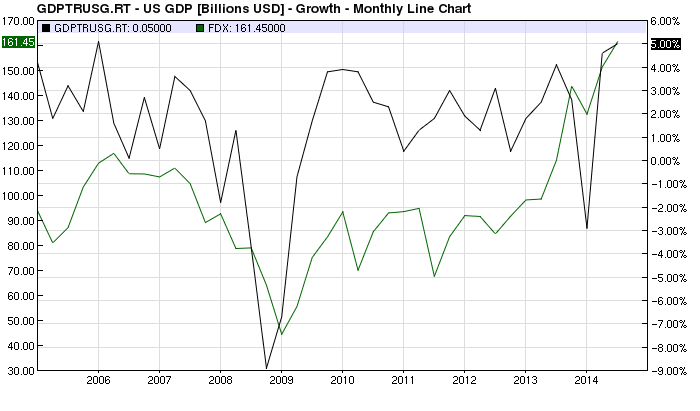
Above is a graph showing FedEx (green line) versus the US GDP growth rate (black line). Please note that FedEx’s stock price is on the left axis, while the GDP growth rate is on the right. As you can see, the relationship between FedEx and the U.S. economy is quite close.
Alcoa {% dividend AA %}
This well-known aluminum manufacturer has long been used as a barometer for the U.S. economy. The company is the third largest producer of aluminum in the world; a commodity used in a wide array of industries, including aerospace, automotive, beverage, and commercial construction sectors. Since so many companies use aluminum produced by Alcoa, the demand for its product, which is ultimately reflected in the stock’s performance, is a telling sign for the overall economy.
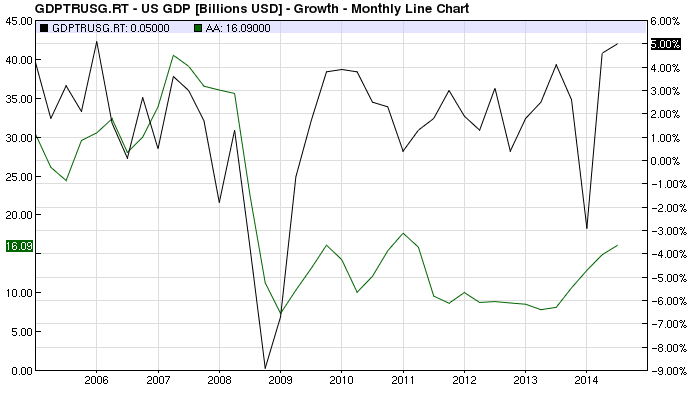
The chart above shows the performance of Alcoa (green line) versus U.S. GDP growth (black line). Alcoa’s performance during the 2008 crisis was closely correlated with GDP. After bottoming out in 2009, however, the stock’s movements versus GDP have not been as strongly correlated, leaving many analysts questioning whether or not Alcoa should still be considered a bellwether.
LVMH Moet Hennessey Louis Vuitton (LVMUY)
Though this luxury goods maker is based in Paris, many believe its performance is closely linked to the overall health of the U.S. economy. The high-end manufacturer makes everything from wines and spirits, fashion and leather goods, perfumes and cosmetics, to watches and jewelry. Many believe that when the economy turns sour, one of the first sectors to take a hit is luxury goods; the opposite is also true, with demand for high-end products rising when conditions improve.
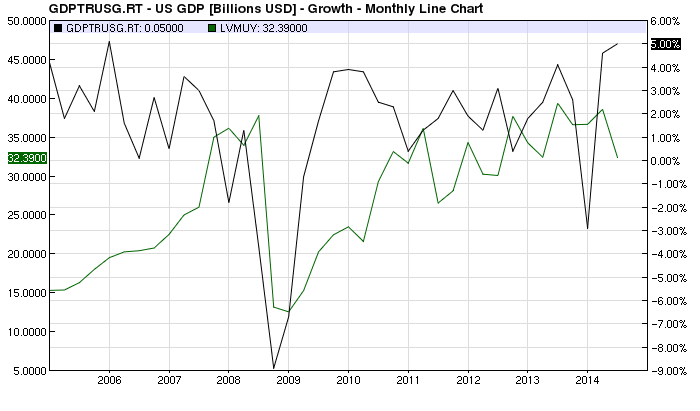
Above is a graph showing LVMH Moet Hennessey Louis Vuitton (green line) versus the US GDP growth rate (black line). During the financial crisis, LVMUY took a steep tumble alongside the economy; and though the company initially struggled to pick up steam, it eventually became more correlated to the most recent GDP recordings [see Inside the Best Dow Days Since the Great Depression].
Caterpillar {% dividend cat %}
This farm and construction machinery manufacturer’s products are used in nearly every construction effort in the U.S., making it a bellwether of U.S. construction and resource extraction. Since construction tends to move in sync with the rest of the economy, the stock is also used as an indicator for the overall health of the economy.
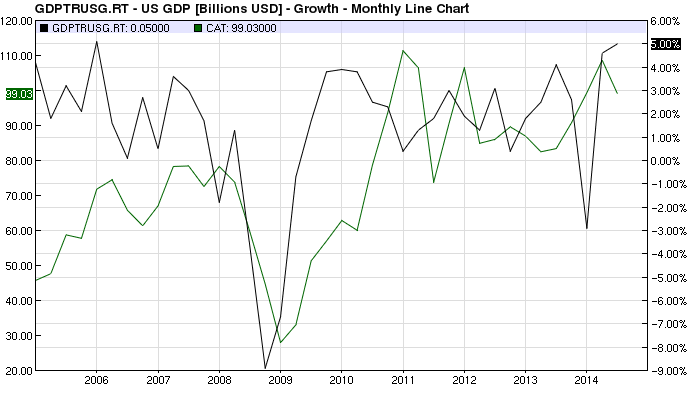
The chart shows the performance of Caterpillar (green line) versus U.S. GDP growth (black line). As the chart shows, Caterpillar’s performance is closely correlated with the shifting economic landscape, though its reaction to these changes are a bit delayed.
Wal-Mart {% dividend wmt %}
This multinational discount retailer has not always been considered a “bellwether” so to speak for the U.S. economy, but during the 2008 financial crisis, the retailer posted stellar results as more and more cash-strapped individuals turned to lower-priced discount stores. In some respects, analysts look at Wal-Mart as a key indicator for when the economy is taking a turn for the worse.
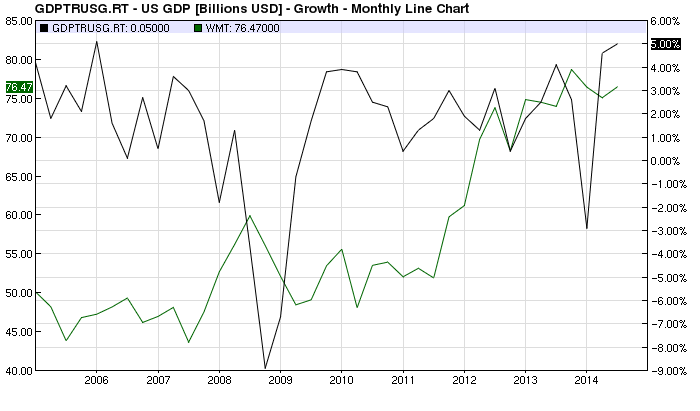
Above is a graph showing Wal-Mart (green line) versus the US GDP growth rate (black line). During the last recession, WMT stock actually performed quite well, but as the economy picked up again in 2009, demand for discounted goods decreased. As the graph depicts, WMT’s inverse relationship with economic growth is best seen during recessionary periods [see Market Timing the Best and Worst S&P 500 Trading Days].
The Bottom Line
While the performances of these companies do not always correlate exactly to the growth or contraction of the U.S. economy, they do serve as great indicators for the overall health of the market. For an ETF that follows the total U.S. stock market, see VTI.
Be sure to visit our complete recommended list of the Best Dividend Stocks, as well as a detailed explanation of our ratings system here.





